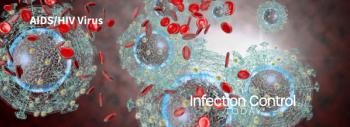
Scientists Develop New Mouse Model to Aid Zika Virus Research
Researchers have developed a new mouse model that could be used in Zika research to better understand the virus and find new treatments, according to a study published in PLOS Pathogens.
Zika virus in C57Bl/6 mice localizes to neurons in the hippocampus and cerebellum at 15 days post infection. Courtesy of Derek Ireland
Researchers have developed a new mouse model that could be used in Zika research to better understand the virus and find new treatments, according to a study published in PLOS Pathogens.
A person infected with Zika virus usually has no symptoms or only has mild ones. However, in recent outbreaks, the virus has been linked to increased rates of neurological disorders and birth defects. There is an urgent need for better animal models for laboratory research to study the Zika virus and potential treatments.
Previous studies have shown that young mice with specific immune system defects are susceptible to Zika infection. However, studying Zika in mice with compromised immune systems could skew results. Now, researchers at the Food and Drug Administration (FDA)’s Center for Drug Evaluation and Research demonstrate that mice with functioning immune systems can be successfully infected with Zika.
“This new mouse model developed by the FDA could be used to explore Zika virus’ pathology and potentially help to develop treatments or vaccines,” says Mohanraj Manangeeswaran, senior staff fellow in the FDA’s Office of Pharmaceutical Quality. “Because the mice used in this model have immune systems that allow them to survive initial infection, they could be particularly helpful for studying the long-term effects of Zika virus infection.”
The new mouse model employs a mouse strain called C57BL/6, which is commonly used in disease research. The scientists infected 1-day-old C57BL/6 mice with Zika virus and found that they develop symptoms of neurological disease, such as unsteady gait and seizures that gradually fade over two weeks.
The researchers compared their new mouse model with young mice that have immune system defects and are known to die several days after Zika infection. They found significant differences in disease progression, immune system response, and neurological effects between the two models.
Source: PLOS
Newsletter
Stay prepared and protected with Infection Control Today's newsletter, delivering essential updates, best practices, and expert insights for infection preventionists.






